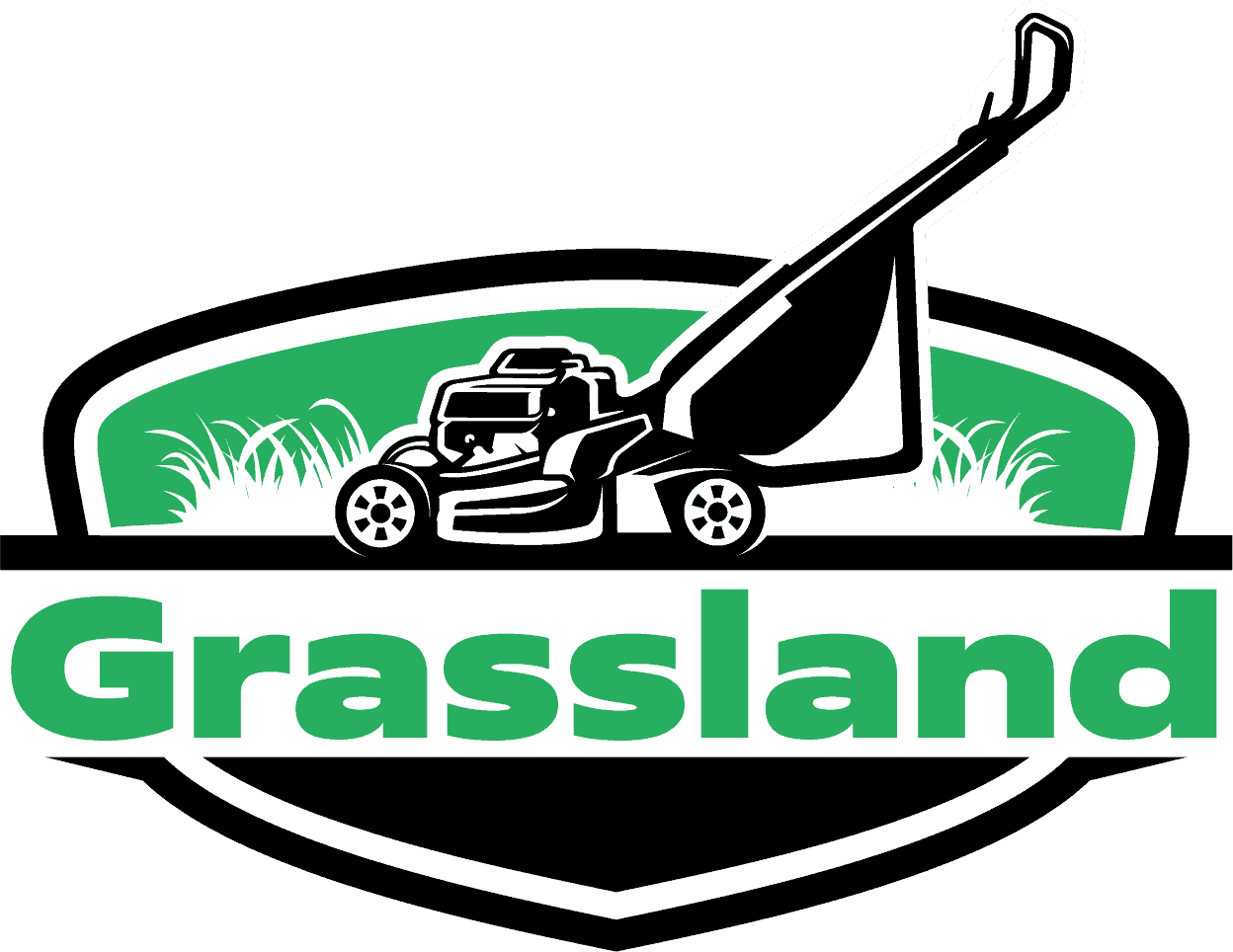Dethatching
Like fertilizing, there is the right timing to dethatch your lawn. If performed incorrectly, it can severely damage the grass’s root system. Dethatching can be dangerous to you as well. As you know, some dethatching tools often come with sharp blades that can cut your skin if you are not wearing gloves.
So what exactly does it mean to dethatch your lawn?
Dethatching is the process of pulling up thatch from a lawn, through hand or mechanically. The material removed must be composted, or else, it will simply reseed your lawn with annual weeds.
If you ever experienced mowing over an area where there was thick thatch, chances are there were microscopic bumps on the soil surface underneath. These bumps are tangled masses of roots left behind when plants die back in winter. They look like brownish-gray mats about 1/4″ deep, becoming barriers to water movement into soil surface pores. Consequently, any raindrop striking them “bounces” off instead of penetrating these openings for infiltration into the soil below. You can use your finger to touch one of these thatch mats and feel the bumpy effect.
Thatch is essential in any lawn or garden. It provides:
- Aeration and insulation
- Protection against soil
- compaction
- Nourishment for earthworms and other organic matter users
- Food for microorganisms that break down organic debris into plant-available nutrients
- Moisture retention during dry periods (similar to mulch)
- Insulation from temperature fluctuations, which can stress plants (protecting them from winter cold or summer heat damage
- Excellent habitat for wildlife (But when thatch becomes too thick, it starts to choke out beneficial living components of the lawn, preventing their ability to carry on necessary functions such as water infiltration and nutrient cycling.)
You don’t need to dethatch if you have a high-maintenance type of lawn care program that sees your grass come under frequent chemical attacks over the entire growing season. Mowing and other grass maintenance practices will take care of thatch as it builds up, but if your goal is focused more on the health and natural beauty of your lawn, then you will need to dethatch at least once a year.
Benefits Of Professional Dethatching
1. Health And Safety Issues
It’s difficult to get out tough weeds if you have an older home with clay soil that has not had regular maintenance. Thatch becomes particularly problematic when it breaks down deep into the ground. Meaning, removing this layer requires a lot of hard work and potential damage to your lawn. Hand removal may be okay for the odd thatch patch, but if you have a large area or thick thatch, it can be challenging and risky to do so.
Experts in this job have the proper tools and equipment to get out tough, deep-rooted thatch without damaging your lawn. They can even specialize in avoiding potential damage like soil compaction, which is vital because compacted soil cannot properly hold water or air. Using machinery such as a dethatcher means lifting all those rocks and debris that may be lying just below the surface, causing severe damage to mower blades. Even if you are doing this job with only manual machines, it is still dangerous because removing excess thatch can expose weeds, including poison ivy or oak, which must be treated carefully before being cut back into the lawn.
2. Soil Compaction
If you recently had work done on your lawn, such as having new turf put down, or if heavy equipment has driven over the ground where there was once something else, you will have quite compacted soil, making it difficult for grass roots to grow deep enough into the ground to get adequate nutrients and water. Adding fertilizer will not solve this problem because the lack of thoroughness where it was applied has limited effectiveness due to poor access to those roots.
Hand thatching is an arduous process that will most likely not be thorough enough to remove the compacted layer. Professionals with the right equipment can provide a much better result.
3. Soil Erosion
This is perhaps one of the biggest dangers of poor soil conditions and why you should always take any measures necessary for proper prevention. If the soil becomes too dry and crumbly, it may erode as the wind quickly picks up those smaller particles and carries them elsewhere. If this happens, they can do a lot of damage, such as clogging ditches or even blocking off waterways, potentially resulting in all kinds of further issues.
Allowing professionals to do this job means you know it’s done properly and prevents potential injury, such as when stirring up dust which is often a problem with all that dry, loose soil.
They use powerful tools designed for this work and can put down suitable preventative measures afterward. Just think how much effort and money you would save in terms of time and potential safety problems.
4. Cost Savings Due To Time And Effort
Raking leaves over your lawn for an hour is good when you’re in a rush. However, dethatching by hand can easily take days, especially if you’ve got more than just one busy person rushing around doing everything. Even with just one other person helping, it won’t save much time at all when they’ll need to be taking regular breaks to rest their aching backs and arms. One of the key benefits of leaving this task to professionals is that they have the tools and equipment required to do an efficient job. Meaning, you don’t have to pay them again next year because your lawn still needs more work.
5. Avoiding Potential Costly Damage To Your Lawn
The roots from weeds, such as dandelions can grow deep into the soil. So if not dealt with regularly, this makes removing them very difficult. Hand removal may break these roots, leading to even more weed growth over time, making it more difficult for your lawn mower to handle during routine maintenance. If you decide you’d like to take on this task yourself, using a machine to remove thatch is not recommended as it can damage the lawn.
6. Don't Be Fooled Into Thinking It's An Easy Job
If you think hiring a professional costs you extra money because you think you could do it yourself, it’s best not to jump in at the deep end. Many customers often ask, “how much does dethatching cost?” This is because they think it will be a quick, relatively low-cost job, so they are usually surprised when they get the quote back for what this work involves. Thatch removal by hand or machine is no small task, but will result in your lawn looking its best, if done properly.
Call us today for your free consultation and estimate with no obligations!
FREQUENTLY ASKED QUESTIONS
Most homeowners have their lawns dethatched twice a year – once in spring and autumn. In extremely dry climates, we may recommend more frequent dethatching.
Dethatching in autumn gives the soil a chance to develop into its full strength for next year when its maximum aeration capacity is needed. Dethatching before winter reduces the risk of compaction by heavy equipment during plowing and re-sowing with grass seed. Springtime dethatching is more suitable for younger lawns that have not fully developed their root systems by autumn, allowing them time to recover from the stress of having large amounts of turf pulled up and left on the verge side.
The best way to find out whether or not your lawn needs dethatching is through a spade. Use the spade handle to wrap lightly on the soil surface over an area that has been covered by turf. If you see lots of earth bounce back up, the soil is compacted. This means that it would benefit from dethatching.

